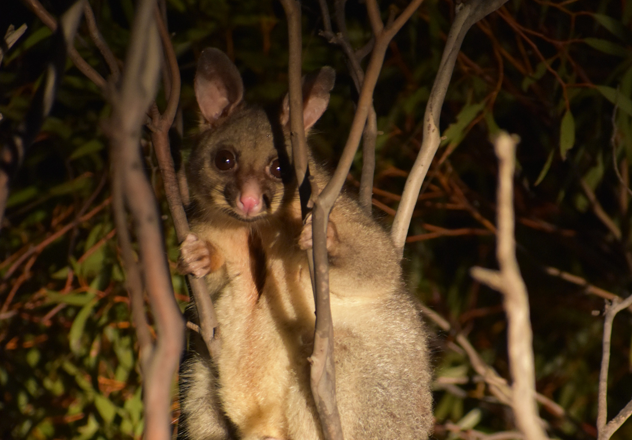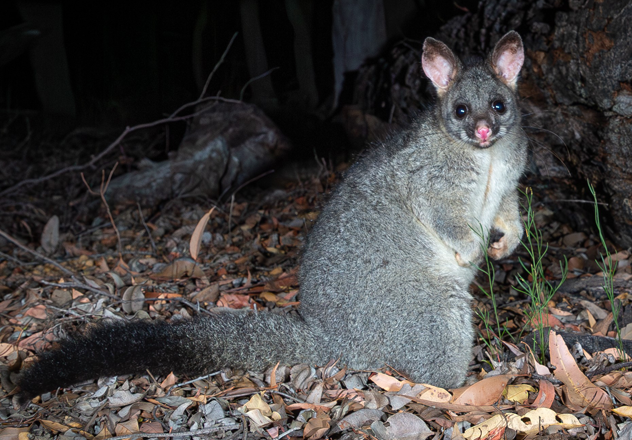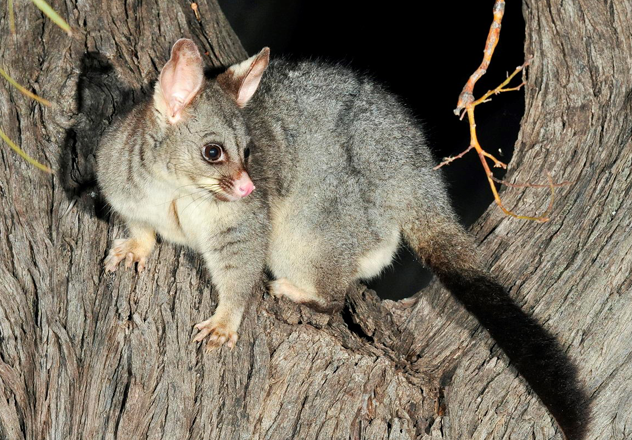Australian Wildlife Conservancy (AWC) has undertaken a crucial research initiative focused on one of the country’s most recognised possum species, the Common Brushtail Possum (Trichosurus vulpecula).
This twelve-year study, conducted at Yookamurra Wildlife Sanctuary in South Australia, not only reveals the complexities of possum behaviour but also provides a roadmap for more effective wildlife management strategies.
Findings from this extensive study were recently published by AWC Ecologists Helen Crisp, Alexandra Ross, and Alice Si in Australian Mammalogy.
 Susie Stockwell/AWC
Susie Stockwell/AWC
The motivation behind this research is rooted in the recognition that trapping is a cornerstone of wildlife research, offering insights into population estimates and trends. However, not all trapping methods are created equal, and the reliability of these estimates hinges on capturing higher numbers of animals.
By scrutinising the factors influencing possum trapping, AWC aims to equip scientists, researchers, and field ecologists with the knowledge needed to choose methods that yield higher captures and, consequently, more reliable estimates.
Specific to Yookamurra, where the Common Brushtail Possum is extinct outside the fenced area, the need for precision in survey methodologies becomes even more apparent. Additionally, with indications of a decline in the species across inland Australia, accurate tracking of population numbers becomes imperative for effective conservation efforts.
 Brad Leue/AWC
Brad Leue/AWC
Surveys, utilising ground-based cage traps, were conducted at least once a year from 2010 to 2022, numbering 450-600 trap nights per survey. Rainfall data, a critical environmental variable, was collected from a rain gauge on the property throughout this time.
The meticulous analysis of this extensive trapping data, coupled with an exploration of the relationship between rainfall and trapping success, unveils a fascinating connection between possum trapping and rainfall patterns.
Possums were found to be more susceptible to trapping when there had been lower rainfall in the six months leading up to the survey. Although on the surface this finding is surprising (surely bad conditions should equal fewer animals, right?) it reveals a complex relationship between semi-arboreal animals and foraging behaviour.
This correlation can be attributed to the scarcity of food in the trees during periods of low rainfall, compelling possums to forage on the ground and making them more likely to find ground-based cage traps, and more easily enticed into traps baited with high-caloric peanut butter balls.
 Wayne Lawler/AWC
Wayne Lawler/AWC
The implications of this research extend far beyond the Yookamurra landscape. The newfound understanding of the relationship between rainfall and possum trapping offers practical applications for wildlife management.
Armed with the knowledge that possums are more likely to be trapped after periods of low rainfall, researchers can optimize survey designs for higher captures and more reliable estimates. This insight enhances capture rates, improves data reliability, and ensures a more nuanced interpretation of survey results.
AWC’s commitment to unlocking the secrets of possum behaviour at Yookamurra represents a crucial step forward in the ongoing efforts to preserve Australia’s unique biodiversity.
Read the full paper and study here.
Help AWC continue vital in-field scientific research
Donate Now